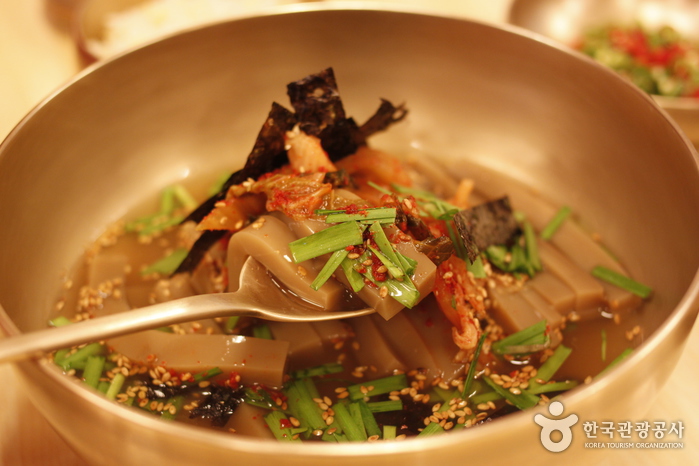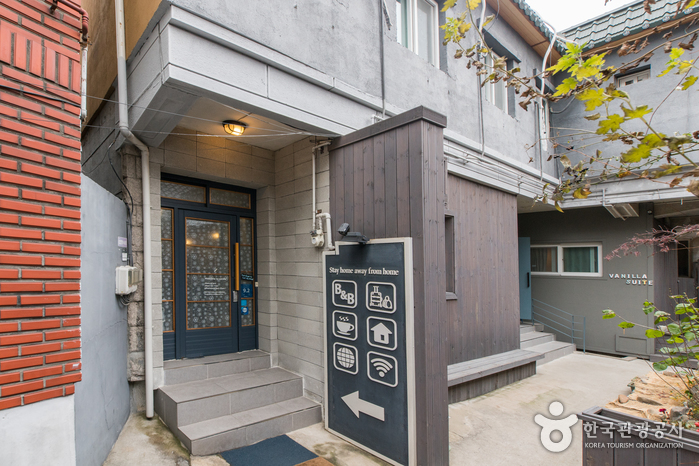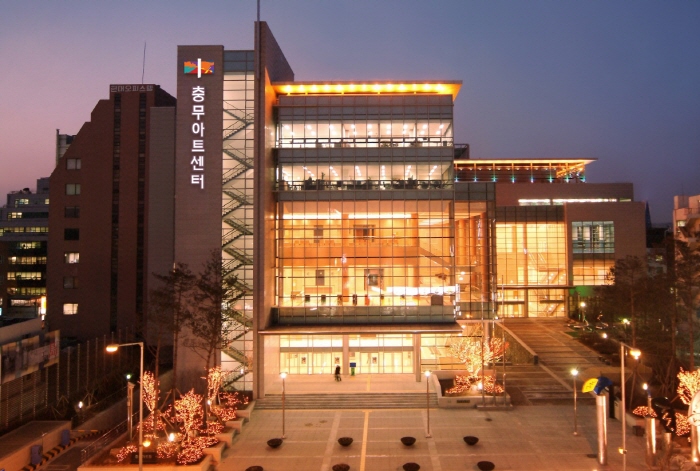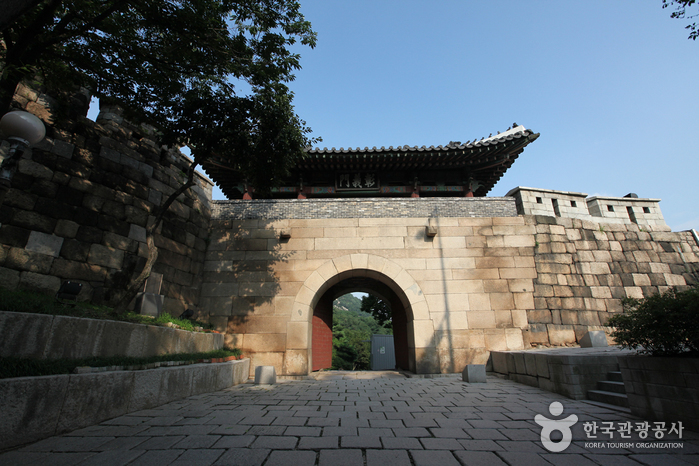Gungnara Naengmyeon Mukbap (궁나라냉면묵밥)
2.7Km 2017-04-12
6, Jibong-ro 12-gil, Jongno-gu, Seoul
+82-2-744-4701
Gungnara Naengmyeon Mukbap originally opened in Ansan, serving up delicious meals of naengmyeon and mukbap. The restaurant became popular, and eventually moved to its current location in Seoul. The jiggly acorn jelly goes well wit the sweet and sour broth in mukbap, a favorite summer-time dish. Visitors can also order the dish with a warm broth for a delicious and healthy dish year round.
Zara - Lotte Seoul Station Branch [Tax Refund Shop] (자라 롯데 서울역점)
2.7Km 2024-04-22
378, Cheongpa-ro, Yongsan-gu, Seoul
-
Olive Young - Plus Branch [Tax Refund Shop] (올리브영 플러스점)
2.7Km 2024-06-27
#B114~#B115, 372, Hangang-daero, Yongsan-gu, Seoul
-
Dongnimmun Gate (독립문)
2.7Km 2022-12-15
251, Tongil-ro, Seodaemun-gu, Seoul
Dongnimmun stands at the location originally known as Yeongeun, where envoys were once treated. When a Chinese envoy visited, the King would go out through this door to greet. In 1898, to announce the independence from Japan, Dongnimun was constructed with the fund collected by the citizens. The traces of the past still remain on Dongnimmun with two pillars in front of Dongnimmun being the remains of Yeongeunmun.
The Arc de Triomphe in France can be recalled in comparison to Dongnimmun. Dongnimmun was built using granite with a passageway x_height of 14.28 meters. On the top it is written ‘Dongnimmun’ in Korean with the national flag drawn on each side. On the inner-left side there are stone stairs leading to the attic. The national flower Mugunghwa are planted around Dongnimmun. Now it is surrounded by roads and it is eye-catching to view when passing by.
Seodaemun Prison History Museum (서대문형무소역사관)
2.7Km 2024-12-02
251 Tongil-ro, Seodaemun-gu, Seoul
Seodaemun Prison was built under the Japanese administration to imprison independence movement activists. It first opened on October 21, 1908 under the name Gyeongseong Prison. Eventually, so many activists were imprisoned that the building had to be expanded. At that time, the name changed to Seodaemun Prison on September 3, 1912. Eighty years later, the prison was turned into Seodaemun Independence Park on August 15, 1992 to commemorate the Korean patriots who were tortured in prison, giving their lives for freedom. Of the many buildings, only seven were preserved for their historical significance, among which three prison buildings and the execution site were designated as a Historic Site. In 1998, the park underwent another transformation into today's Seodaemun Prison History Hall to educate the public on the importance of Korea's independence and the sacrifices of those who fought to achieve it.
Hostel Vanilla2
2.7Km 2021-04-09
34-8, Jong-ro 57-gil, Jongno-gu, Seoul
+82-10-9945-1944
Hostel Vanilla 2 is a guesthouse in a residential house located in Sungin-dong, Jongno-gu, Seoul. The 2-story house has 9 cozy rooms. Over 90% of the guests are from China, Taiwan, Hong Kong, Thailand, and Japan, and most of them are in their twenties. Since it is within a 10-minute walk from Dongdaemun Design Plaza, most guests – particularly those who came to Korea to shop during their tour - stay there for three or four days. All the guestrooms are for two and are kept clean at all times. The guesthouse provides free luggage storage service even after the guest has checked out, which is very convenient to the shoppers. Because the guests are young, the guesthouse owner communicates with the guests through various social network services and apps.
Chungmu Arts Center (충무아트센터)
2.7Km 2024-03-06
387, Toegye-ro, Jung-gu, Seoul
+82-2-2230-6600
Chungmu Arts Center is a complex cultural facility with an optimal conditions for watching performances. It has a large theater, a medium theater (black), and a small theater (blue). It also boasts great galleries, studios, and a swimming pool, attracting numerous visitors. In addition, one can enjoy performances of various genres, including classical music, plays, musicals, and concerts. Located close to Dongdaemun, it has good accessibility.
Seodaemun Independence Park (서대문독립공원)
2.7Km 2022-12-15
251, Tongil-ro, Seodaemun-gu, Seoul
+82-2-3140-8305
Seodaemun Independence Park was built on the former Seoul Detention Camp. It was used to imprison thousands of Korean independence activists until the liberation from the Japanese occupation on August 15, 1945, as well as the political prisoners during the political turmoil in the 1960s. When the prison was moved to Uiwang-si, Gyeonggi-do in November 1987, the area was restored and turned into a memorial park in August 15, 1992 to honor the sacrifices of the martyrs. The park preserves seven prison buildings, an execution ground, underground women’s prison, and the March 1st Movement Monument that has been moved from Tapgol Park in Jongno.
One of the most significant monuments of the Seodaemun Independence Park is Dongnimmun Gate (Independence Gate), which has been designated a Historic Site. Nearby is Dongnipgwan (Independence Hall), originally called Mohwagwan, which was used to greet Chinese envoys during the Joseon dynasty. Today, the hall enshrines 2,327 tablets inscribed with the names of Koreans who died for the cause of national independence. Standing right next to Dongnimmun Gate are the remnants of Yeongeunmun Gate, another Historic Site. Other sights inside the park include the Patriotic Martyr Monument, Declaration of Independence Monument, and Statue of Dr. Seo Jae-pil, who was an independence activist and publisher of Korea’s first independent newspaper. The main highlight of the park is the Seodaemun Prison History Hall, a former prison building that was renovated into a history museum.
Changuimun Gate - Jahamun Gate (창의문(자하문))
2.7Km 2020-04-02
118, Changuimun-ro, Jongno-gu, Seoul
+82-2-2148-1822
Changuimun Gate was often called Jahamun Gate. It was one of four mini-gates in the north surrounding the walled city of Hanyang (Seoul) during the Joseon dynasty. After the closure of Sukjeongmun Gate, one of the four main gates, Changuimun Gate became a favorite north gate. Hence, people also called Changuimun the North Gate. It is the only gate among four mini gates that is still in its original state. Although it is small, almost 50m² in terms of size, it looks very firm and sturdy. While Dongsomun Gate, another of the four mini gates, is decorated with a phoenix, Changuimun Gate is adorned with a wooden chicken along its rafters. The reason behind the wooden chicken was that the chicken was believed to be the nemesis of the centipede. People believed that installing the wooden chicken was important to overcome the harmful spirit of the centipede.
![KGC - Dongmyo Branch [Tax Refund Shop] (KGC 동묘점)](http://tong.visitkorea.or.kr/cms/resource/91/2878191_image2_1.jpg)

![Zara - Lotte Seoul Station Branch [Tax Refund Shop] (자라 롯데 서울역점)](http://tong.visitkorea.or.kr/cms/resource/25/2878425_image2_1.jpg)




 English
English
 한국어
한국어 日本語
日本語 中文(简体)
中文(简体) Deutsch
Deutsch Français
Français Español
Español Русский
Русский